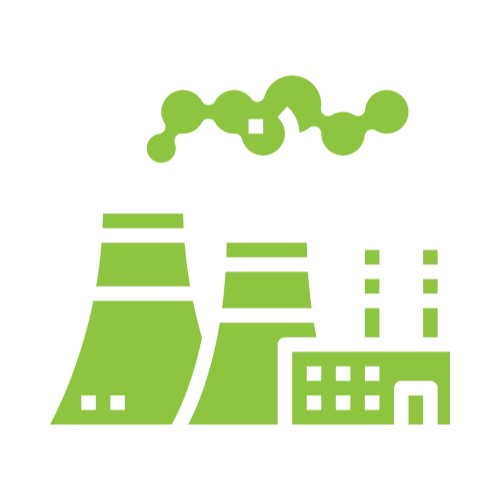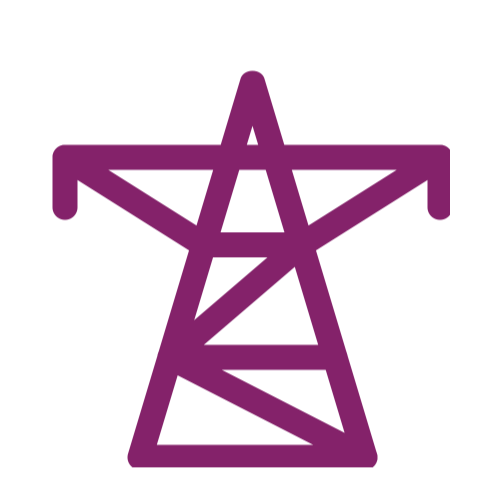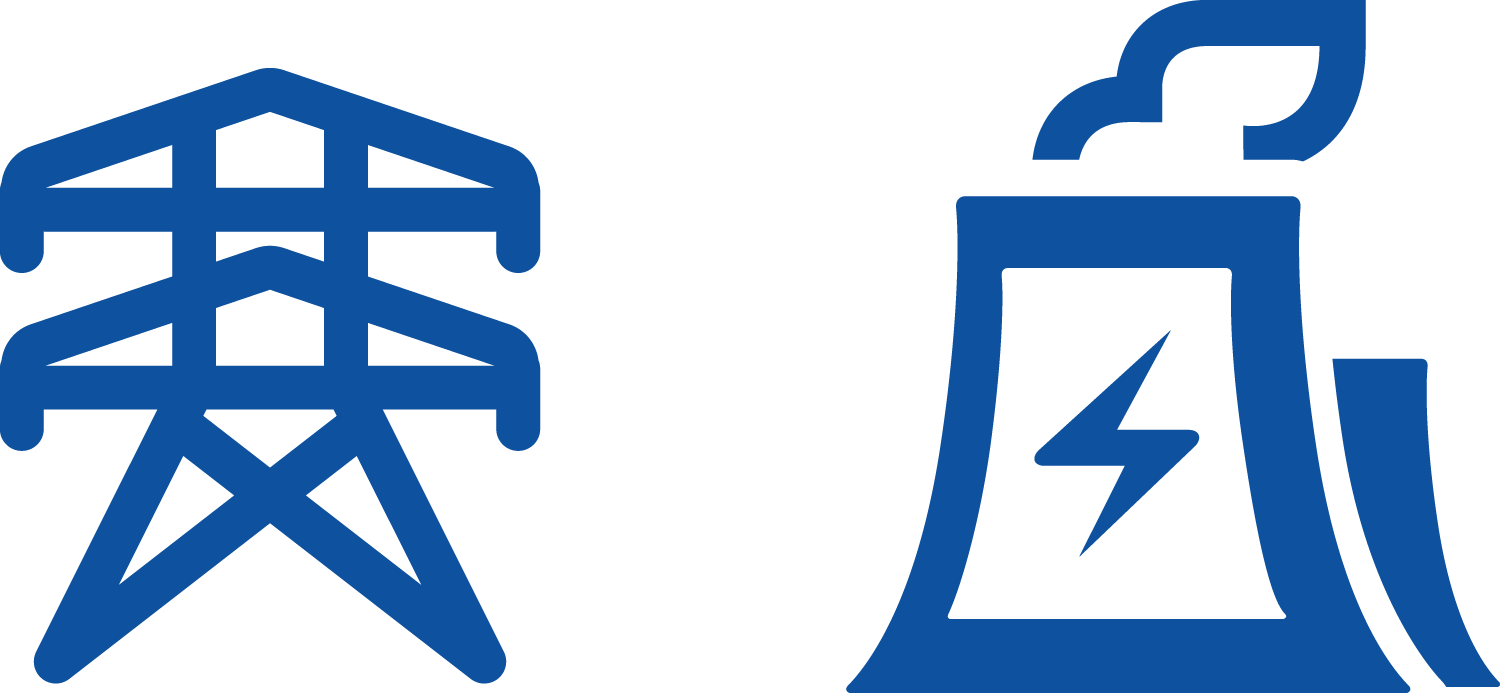Infrastructure Climate Adaptation and Resilience (ICAR) Framework
A conceptual methodology designed to prioritize and protect energy infrastructure from current and future physical climate risks
Protecting energy infrastructure from climate physical risks
We’re experiencing unprecedented heat, drought, wildfires, flooding, melting permafrost and more frequent storms. The impacts of these storms are arriving earlier and accelerating faster than many scientists had anticipated. Depending on the geography in question, these conditions are taking their toll on electricity generation, transmission and distribution, and driving changes in load. Protecting energy infrastructure from physical climate risks is the heart of ICAR’s mission.
Infrastructure Climate Adaptation and Resilience (ICAR) Methodology
Addresses the need to protect and adapt critical energy and other interdependent infrastructure assets from future destructive physical forces due to climate change.
Aligns engineering companies with predictive climate modelers to create adaptation and resilience strategies, enabling asset owners to address climate-related threats proactively.
Climate-Related Impacts
Vulnerable Energy Assets
ICAR Workflow
Looking Ahead
leadership
Collaborate with ICAR
contact us
ICAR Addresses Disruptive and Destructive Impacts on Energy Systems
These unwelcome guests are already present in most locations and arriving faster than traditional infrastructure planning cycles can handle.

Too Much Heat
Heat Domes, Wildfires, Increased Grid Loads, Melting Permafrost
Areas of Concern
- Heat Domes – trigger blackouts and brownouts
- Wildfires – burn up transmission and distribution infrastructure
- Increasing Grid Loads – strain current infrastructure requiring more to be built
- Melting Permafrost – cause failure of existing buried pipeline and foundation infrastructure

Too Much Water
Floods, Storm Surge, Intense Storms, Unpredictable Weather Events
Areas of Concern
- Floods – affect power delivery and destroy power infrastructure
- Storm Surge – inundates energy assets during storm events
- Intense Storms – destroy transmission lines and towers, and other significant infrastructure assets

Not Enough Water
Thermal Generation Cooling Source, Hydroelectric Generation Capacity
Areas of Concern
- Impacts Thermal Generation – curtails operation of power plants if water levels in reservoirs, lakes, or rivers drop too low, or if discharges of heated water from plants raise water temperatures too high
- Impacts Hydro Generation – drought and heat cause low water levels affecting power generation

Breaks in the Polar Vortex
Cold Weather, Polar Vortex Creep, Infrastructure Susceptibility to Cold
Areas of Concern
- Cold Weather Events – freeze pipelines, pumps, wind turbines, and control system sensors, causing blackouts that present economic hardship and loss of human life
Energy Assets Requiring ICAR Analysis
Frequent and long-lasting power outages threaten the nation’s grid and affect critical infrastructure, fuel availability and energy-demand balance. Every sector of the U.S economy is affected by the reliability, security and resilience of the U.S. energy system. The economy and national security could be affected by cascading impacts on other critical sectors.

POWER GENERATION AND INFRASTRUCTURE FACILITIES
Coal, natural gas, nuclear, hydroelectric, geothermal, wind, solar

ELECTRIC TRANSMISSION AND DISTRIBUTION
Substations and transformers, transition lines and distribution feeders, towers

NATURAL GAS TRANSMISSION AND DISTRIBUTION
Compression stations, pipelines, transfer facilities, port infrastructure

ENERGY DISTRIBUTION CONTROL CENTERS
Electric and natural gas

ENERGY STORAGE FACILITIES AND RESERVOIRS
Hydro, compressed air, battery, hydrogen
ICAR Analysis Considerations
The ICAR methodology workflow considers many static and dynamic variables and presents decision-makers with readily understandable and actionable information.
Methodology Workflow: Static and Dynamic Variables

Filtering Decision Lenses
Tailorable filters play a role at several different stages of the ICAR workflow. For example, national security, economic security, public health, equity, and other variables can be included or excluded and weighted to accommodate the circumstances of the missions supported, loads served, geography, community, and timeframe.

Infrastructure assets
Phase 1 - Consequence Prioritization Phase
-
- Identify energy infrastructure assets that must be protected first
- Everything cannot be protected. Some assets and functions may need triage
- Rank asset protection, functional adaptation and siting selections using national security, economic security, public health and equity priorities
- Make the best use of scarce resources

Climate physical risks and geo-temporal climate models
Phase 2 - Predictive Risk Assessment
-
- Project likely futures with as much as confidence and precision as possible
- Leverage global climate models using high-resolution downscaled data
- Use climate models to assist planners in generating scenarios
- Provide insight into the future physical risks that will threaten infrastructure
- Create key information related to projected impacts and their projected timing
- Example: Transmission lines, distribution feeders and substations must be protected from fires, floods and extreme temperatures to ensure electricity reaches customers

Affected resources, all-hazards approach
Phase 3 - Interdependency Analysis
-
- Consider related sector functions and factor them into the recommendations produced
- Example 1: When water is not available due to drought or is too hot to cool thermal generation plants, the plant may be derated or required to cease operation
- Example 2: If power is interrupted, water and wastewater treatment plants are unable to operate, bringing health, environmental and economic consequences
- Transportation and communications are other key interdependent sectors that must be considered
- Consider related sector functions and factor them into the recommendations produced

Barriers, hardening, undergrounding, etc.
Phase 4 - Resilience Measures and Functional Adaptions
- Describe the coming threats and helps generate candidate solutions
- Identify activities to protect functions and assets requiring attention
- Use risk types and timelines described during this process to produce appropriate adaptive design and engineered hardening alternatives
- Prioritize the best options by cost-effectiveness and projected efficacy

Cost-benefit Analysis
Cost-benefit analyses are performed following the creation of resilience and adaptation options. The analysis considers multiple inputs. For example:
- Confidence – that the measure will provide the required level of asset or function protection against present and projected physical risks
- Duration – the anticipated timeframe in decades that the candidate resilience or adaptive measure will continue to perform as required
- Time to execute – how long the project will take to complete, including considerations of funding, permitting, siting, etc.
- Cost – initial and full lifecycle costs
Looking Ahead: National Climate-Related Energy Infrastructure Assessments
Commentary and Action on Energy Infrastructures
In U.S. federal government guidance, there’s a sobering note on energy infrastructures in the most recent National Climate Assessment:
“The Nation’s energy system is already affected by extreme weather events, and due to climate change, it is projected to be increasingly threatened by more frequent and longer-lasting power outages affecting critical energy infrastructure and creating fuel availability and demand imbalances. The reliability, security, and resilience of the energy system underpin virtually every sector of the U.S. economy. Cascading impacts on other critical sectors could affect economic and national security.”
The following resources and articles provide a deeper dive into the climate-related infrastructure challenges we are facing and an overview of recommendations designed to address critical energy infrastructure challenges in the near term.
 Climate Change Impacts on the Nation’s Electricity Sector
Climate Change Impacts on the Nation’s Electricity Sector
Evaluating Climate Change Impacts By Craig D. Zamuda
 Resilience Optimization Center (IROC)
Resilience Optimization Center (IROC)
Idaho National Laboratory – A National Center for Advancing Systems Resilience and Risk Management
 Climate Change 2022: Impacts, Adaptation and Vulnerability
Climate Change 2022: Impacts, Adaptation and Vulnerability
The Intergovernmental Panel on Climate Change
 How to make infrastructure more resilient against climate change
How to make infrastructure more resilient against climate change
Civil Engineering Source By Robert L. Reid
Leadership
Andy Bochman
Senior Grid Strategist
National & Homeland Security
Idaho National Laboratory
Andy provides strategic guidance on topics at the intersection of grid security and infrastructure resilience and adaptation to senior U.S. and international government and industry leaders. A nonresident senior fellow at the Atlantic Council’s Global Energy Center, in 2021 he published his first book, “Countering Cyber Sabotage: Introducing Consequence-based Cyber-Informed Engineering”.
Andy began his career as a communications officer in the U.S. Air Force, and prior to joining INL was a senior advisor at the Chertoff Group and the Energy Security lead at IBM. Andy received a bachelor’s from the U.S. Air Force Academy and a masters in biology and environmental management from Harvard University.
Ryan Hruska
Chief Scientist for Infrastructure Assurance and Analysis
National & Homeland Security
Idaho National Laboratory
Ryan provides critical energy infrastructure interdependency research in the areas of infrastructure resilience and adaptation. His work focuses on energy grid security using the All Hazards Analysis Framework (AHA), a specialized tool INL developed to guide research and policy decision-making and identify grid vulnerabilities. Ryan’s current research focus informs the connection between critical infrastructure disruptions and the disruption of key supply chains.
Ryan began his career as a satellite communications technician in the Washington Air National Guard. He conducted his post-master’s degree research fellowship at INL and joined the laboratory full time as a research scientist shortly thereafter. Ryan received a bachelor’s in cartography, a master’s in environmental science – GIS, and a master’s in computer science from the University of Idaho. He is currently working toward his Ph.D. in computer science. He is also a Certified Information Systems Security Professional (ISC).
Frequently Asked Questions
Who are the target users of the Infrastructure Climate Adaptation and Resilience (ICAR) methodology?
Anyone who has the responsibility to make or influence decisions related to protecting the most critical services (e.g., electricity, water and wastewater treatment, communications, etc.) in a city, town or region. This might include professionals in asset-owning and asset-operating organizations, state and local regulators, engineering companies, finance, bonding, and insurance firms, and more.
How did the Infrastructure Climate Adaptation and Resilience (ICAR) effort start?
Thinking about protecting our most important infrastructure assets from cyber attackers formed the basis for the earliest versions of Infrastructure Climate Adaptation and Resilience (ICAR). The threat is different of course, but much of the cyber defense strategy transfers well to defending against physical climate risks.
Are there ways interested people can contribute to the Infrastructure Climate Adaptation and Resilience (ICAR) effort?
Absolutely. The Infrastructure Climate Adaptation and Resilience (ICAR) workflow steps are fully informed not just by the consequence prioritization schemes, climate model and interdependency analytic inputs, and adaptive engineering options, but also by other key elements like regulation, permitting, and financing constraints. We update the framework as new information becomes available to provide even greater utility to decision-makers as more is learned. Please contact us if you have something to share that might help us further improve and optimize this tool.
Collaborate with ICAR
The Infrastructure Climate Adaptation and Resilience team facilitates technical discussions between energy industry owner-operators, the U.S. government and other academic and asset stakeholders to develop a framework to address critical climate-related energy infrastructure challenges.
Contact us to provide input or collaborate on the following topics:
- Developing climate adaptation and resilience strategies using ICAR methodology
- Working with predictive climate modelers and energy infrastructure engineers to identify high-consequence threats to owner-operator assets
- Collaborating to further the ICAR analysis and develop best practices and methodologies for climate-related energy infrastructure hardening.